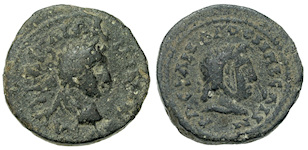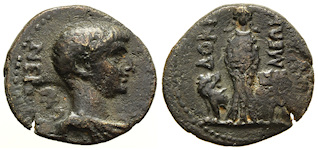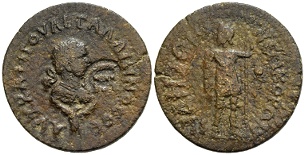Fine Coins Showcase
Antiquities Showcase
New & Reduced
Apr 24, 2024
Apr 23, 2024
Apr 22, 2024
Apr 21, 2024
Apr 20, 2024
Apr 19, 2024
Apr 18, 2024
Apr 17, 2024
Apr 16, 2024
Apr 15, 2024
Apr 14, 2024
Apr 09, 2024
Apr 08, 2024
Apr 07, 2024
Apr 06, 2024
Apr 05, 2024
Mar 05, 2024
Feb 24, 2024
Feb 23, 2024
Feb 18, 2024
Feb 12, 2024
Feb 11, 2024
Feb 09, 2024
Feb 01, 2024
Jan 25, 2024
Jan 15, 2024
Jan 13, 2024
Dec 20, 2023
Nov 19, 2023
Oct 23, 2023
Oct 22, 2023
Oct 18, 2023
Oct 14, 2023
Oct 11, 2023
Oct 07, 2023
Oct 05, 2023
Oct 03, 2023
Sep 28, 2023
Sep 22, 2023
Sep 21, 2023
Sep 19, 2023
Sep 18, 2023
Sep 13, 2023
Sep 11, 2023
Aug 14, 2023
Aug 10, 2023
Aug 08, 2023
Aug 01, 2023
Jul 28, 2023
Jul 17, 2023
Jul 16, 2023
Jul 12, 2023
Jul 09, 2023
Jul 03, 2023
Jun 26, 2023
Jun 11, 2023
May 04, 2023
May 03, 2023
Apr 06, 2023
Mar 30, 2023
Mar 29, 2023
Mar 28, 2023
Mar 26, 2023
Mar 25, 2023
Mar 17, 2023
Mar 16, 2023
Mar 15, 2023
Feb 27, 2023
Feb 18, 2023
Feb 07, 2023
Feb 05, 2023
Jan 18, 2023
Dec 31, 2022
Dec 15, 2022
Oct 28, 2022
Oct 09, 2022
Sep 27, 2022
Sep 24, 2022
Aug 29, 2022
Jul 11, 2022
Jun 17, 2022
Jun 14, 2022
May 30, 2022
Apr 11, 2022
Apr 09, 2022
Apr 02, 2022
Feb 04, 2022
Feb 02, 2022
Oct 05, 2021
Jun 23, 2021
Home ▸ Catalog ▸ |Themes & Provenance| ▸ |Numismatics| ▸ |Countermarked||View Options:   | | | | | | A countermark is a stamped or punched impression adding elements of design to a coin after it was originally struck. The practice of countermarking coins was widespread throughout antiquity. It was particularly common in the provinces of the Roman Empire. Countermarks were applied to coins for many reasons, including revalidation, revaluation, devaluation, and propaganda. Exactly when and why any individual countermark was applied is often uncertain. |


Side was founded by Greeks from Cyme, Aeolis, most likely in the 7th century B.C. The settlers started using the local language and over time forgot their native Greek. Excavations have revealed inscriptions written in this language, still undeciphered, dating from as late as the 2nd century B.C. The name Side is from this indigenous Anatolian language and means pomegranate.GB114929. Bronze AE 18, SNG Pfalz IV 490 (with hippocamp c/m), SNG BnF 772 var. (caduceus left), SNG Cop -, SNGvA -, BMC Lycia -, VF, green patina, scratches, earthen deposits, large crack from countermarking, weight 2.995 g, maximum diameter 17.7 mm, die axis 0o, Side (near Selimiye, Antalya Province, Turkey) mint, c. late 4th - early 3rd century B.C.; obverse helmeted head of Athena right, countermark: obscure, perhaps a hippocamp (as on SNG Pfalz IV 490); reverse pomegranate, ΣIΔH above, upright palm frond left; first specimen of this type handled by FORVM; rare;
Hierapolis, Phrygia, c. 218 - 222 A.D.


Struck during the reign of Elagabalus. The AKTIA festival and games at Hierapolis were founded in honor of Augustus' victory at Actium. RP114892. Bronze AE 26, RPC Online VI T5485; Johnston Hierapolis 74; BMC Phrygia p. 242, 89; SNG Cop 444; Waddington 6128; SNGvA -; SNG Tüb -; SNG Hunt -; Weber -; McClean -, aF, uneven strike, flan crack, part of rev. flattened by countermarking, weight 5.609 g, maximum diameter 24.30 mm, die axis 180o, Phrygia, Hierapolis (near Pamukkale, Turkey) mint, pseudo-autonomous, c. 218 - 222 A.D.; obverse IEPA CY-NKΛHTO-C, draped bust of the senate right; countermark: Nike(?); reverse IEPAΠOΛEITΩN NEΩKOPΩN, A/KTI/A in three lines within a demos crown (laurel wreath); very rare;
Ptolemaic Kingdom of Egypt, Ptolemy III Euergetes, 246 - 222 B.C.


According to Ptolemaic bronze expert Daniel Wolf, "These coins are attributed by Svoronos to Ake-Ptolemaïs (Acre), but modern finds indicate they are most likely from the area near (modern) Bodrum in Turkey." Bodrum was called Halicarnassus, Caria in ancient times and was famous for housing the Mausoleum of Mausolus, one of the Seven Wonders of the Ancient World.GP114040. Bronze obol, Lorber CPE B436; Svoronos 791; Weiser 79; BMC Ptolemies p. 54, 75; SNG Cop 476; Malter 102; Noeske -; Hosking -, Choice VF, near centered, green patina, highlighting earthen deposits, scratches, obv. edge beveled, central depressions, weight 10.403 g, maximum diameter 24.0 mm, die axis 0o, Caria (Halicarnassus?) mint, 246 - 222 B.C.; obverse diademed head of Zeus Ammon right; countermark: six-pointed pellet-star in a round punch; reverse ΠTOΛEMAIOY BAΣIΛEΩΣ (of King Ptolemy), eagle standing half left on thunderbolt, head left, wings closed, tripod in left field; scarce;
Elagabalus, 16 May 218 - 11 March 222 A.D., Gerasa, Arabia Petraea


Jerash, Jordan is north of the national capital Amman. Inhabited since the Bronze Age, it's known for the ruins of the walled Greco-Roman city Gerasa just outside the modern city. Josephus mentions the city as being principally inhabited by Syrians, but also having a small Jewish community. In 106, Jerash was absorbed into the Roman province of Arabia, which included Philadelphia (modern day Amman). Jerash is considered one of the largest and most well-preserved sites of Roman architecture outside of Italy. It is sometimes referred to as the "Pompeii of the Middle East" due to its size, extent of excavation and level of preservation.RP57203. Bronze AE 20, RPC Online VI T9306.4 (same c/m, 7 spec.); Spijkerman 34a.3 (same coin); Rosenberger 41 (same c/m); Sofaer 32; c/m: Howgego 376 (9 spec.), Choice F, well centered, nice sea-green patina, rare fully legible rev. legend; c/m: F, weight 7.065 g, maximum diameter 19.7 mm, die axis 180o, Gerasa (Jerash, Jordon) mint, c. 218 - 222 A.D.; obverse AVT KAICAP ANTWNINOC, laureate and draped bust right, seen from behind; reverse AΛEΞANΔPOC MAKEΔWN, diademed head of Alexander the Great right, countermark: strung bow; very nice for the type!; very rare;
Nero, 13 October 54 - 9 June 68 A.D., Docimeium, Phrygia


Cybele was born a hermaphrodite, but castrated by the gods, she became female. Heeding the Sibylline oracle the senate brought her worship to Rome in 204 B.C. as the first officially sanctioned Eastern cult. After approval, they were dismayed to learn that the priesthood required voluntary self-castration, which was abhorrent to the Romans. Romans were barred from entering the priesthood or even entering the priest's sanctuary. The eunuch priests, recruited from outside Rome, were confined to their sanctuary, leaving only to parade in the streets during festivals in April. Claudius removed the bans on Roman participation, making worship of Cybele and her consort Attis part of the state religion.RP113887. Brass AE 18, RPC I 3213.3 (same c/m); BMC Phrygia p. 191, 18 (same); Waddington 5954 (same); Hunterian II 2 = SNG Hunt I 2042 (same); c/m: Howgego 224, VF, well-defined countermark, dark patina, open edge crack, weight 3.064 g, maximum diameter 18.1 mm, die axis 0o, Docimeium (Iscehisar, Turkey) mint, c. 55 A.D.(?); obverse NEPΩN KAIΣAP, bare-headed draped bust of young Nero right, countermark: bearded bust left in an oval punch; reverse Cybele standing facing, between two lions, both turned away from her, but looking back in anticipation, ΔOKI/MEΩN divided in two upward lines above lions;
Septimius Severus, 9 April 193 - 4 February 211 A.D., Laodiceia ad Mare, Seleucis and Pieria, Syria


Laodiceia was made a metropolis in 194 and a colonia with ius Italicum in 197/8 A.D.RP113185. Bronze AE 27, Meyer Laodikeia 10 (same rev. die); SNG Cop 362 (same c/ms); BMC Galatia p. 258, 84; Lindgren 2088; c/ms: Howgego 581 (CA), Howgego 586 (COL), gF, desert patina with highlighting earthen deposits, edge cracks, weight 9.525 g, maximum diameter 27.2 mm, die axis 0o, Laodicea ad Mare (Latakia, Syria) mint, obverse AYT KAI CEΠ CEOYHPOC, laureate head right, countermarks: CA and COL each in rectangular punch; reverse IOYΛ / ΛAOΔIC/EOYH / M/HTPOΠO/ΛEΩC (MH ligate) in five lines within laurel wreath; from the Michael Arslan Collection;
Laodicea ad Lycum, Phrygia, 198 - 222 A.D.


The Synedrion of the Neoi was a Greek city's organization young men, roughly 20 - 30 years old, who had completed their military training but who were not old enough to participate the city assembly, which was typically limited to "elders" over 30. The neaniskoi ("the boys") were organized around the gymnasia and had a range of military, political, social, and religious functions that varied by the city and over time.RP112159. Bronze diassarion, RPC Online VI T5497; BMC Phrygia p. 299, 132; Martin Demos p. 215, 33; Imhoof-Blumer KM p. 275, 53; SNG Lewis 1610; c/m: Howgego 631 (PH) & 42 (bust), aF, dark brown patina, earthen deposits, holed, weight 6.909 g, maximum diameter 25.0 mm, die axis 180o, Laodicea ad Lycum (near Denizli, Turkey) mint, time of Caracalla to Elagabalus, 198 - 222 A.D.; obverse CYNEΔPIOY NEΩN (Synedrion of the Neoi), diademed and draped bust of the Synedrion of the Neoi left, holding two rods; countermarks: PH ligate (year 108 = 230/231 A.D.) in a 5.8mm round punch, bust of emperor right with CE or CEB before in 6.1 mm oval punch; reverse ΛAOΔIKEΩN NEΩKOPΩN, Hypnos-Thanatos or Eros reclining left on rocks, propping his head on his left hand, holding arrow(?) in his right hand; from Shawn Caza, former diplomat, author of A Handbook of Late Roman Coins (Spink, 2021), collection assembled during postings and international travel; ex Dorotheum Vienna; very rare;
Gallienus, August 253 - September 268 A.D., Side, Pamphylia


RP112694. Bronze 5 assaria, SNG Cop 4844 (same obv. die), SNG BnF 924, BMC Lycia p. 160, 110, SNG Pfalz -, SNG Cop -, SNG Righetti -, Lindgren -; c/m: Howgego 805 (169 pcs), F, well centered, rough, edge cracks, weight 17.036 g, maximum diameter 29.7 mm, die axis 30o, Side (near Selimiye, Antalya Province, Turkey) mint, joint reign, Aug 253 - 260 A.D.; obverse AYT KAI ΠOY ΛI ΓAΛΛIHNOC CE, laureate bust right, wearing paludamentum and cuirass, eagle right with wings open below; countermark on right: E (5 assaria) in 7.5mm round punch obliterating IA (prior mark of value); reverse CIΔHTΩN NEΩKOPΩN, Apollo standing front, head left, wearing short chiton, chlamys and boots, patera in right hand, left hand rests on laurel tipped staff, pomegranate on branch right; scarce;
Elagabalus, 16 May 218 - 11 March 222 A.D., Caesarea, Cappadocia


Kayseri, originally called Mazaka or Mazaca, is in central Turkey on a low spur on the north side of Mount Erciyes (Mount Argaeus in ancient times). During Achaemenid Persian rule, it was the capital of a Satrapy on the crossroads of the Royal Road from Sardis to Susa and the trade route from Sinope to the Euphrates. It was conquered by Alexander's general Perdikkas, was ruled by Eumenes of Cardia, then passed to the Seleucid empire after the battle of Ipsus. It became the capital of the independent Cappadocian Kingdom under Ariarathes III, around 250 B.C. During Strabo's time it was also known as Eusebia, after the Cappadocian King Ariarathes V Eusebes, 163 – 130 B.C. The name was changed again to "Caesarea in Cappadocia" in honor of Caesar Augustus, upon his death in 14 A.D. The city passed under formal Roman rule in 17 A.D. In Roman times, it prospered on the route from Ephesus to the East. Caesarea was destroyed by the Sassanid King Shapur I after his victory over the Emperor Valerian I in 260 A.D. At the time it was recorded to have around 400,000 inhabitants. Arabic influence changed Caesarea to the modern name Kayseri. The city gradually recovered and has a population of around 1 million people today. Few traces of the ancient city survive.RP112707. Bronze AE 27, Henseler 1062 (698d, notes otherwise unpublished var.), RPC Online VI T6703.26, Sydenham Caesarea p. 119, 522 (obv. leg. var.), F, dark green patina, some legend weak/off flan, porous, weight 12.451 g, maximum diameter 27.0 mm, die axis 315o, Cappadocia, Caesarea (Kayseri, Turkey) mint, 219 - 220 A.D.; obverse AY M AYPHΛIOC - ANTWNEINOC, laureate, draped, and cuirassed bust right, seen from behind; countermark: head of Helios right (?, obscure, uncertain) in a 4.4mm round punch; reverse MHTPOΠO - KAICAPIAC, agalma of Mount Argaeus placed on garlanded altar, ET Γ (year 3) in exergue;
Caracalla, 28 January 198 - 8 April 217 A.D., Alabanda, Caria



The portrait countermarks of Caracalla and Geta (Howgego 39i & 39ii) are well-known on Alabandian Roman provincials from the standpoint of their occurrence, but not much is known on why they exist. Writing in Greek Imperial Countermarks (1985), Christopher Howgego notes simply, "It is impossible to read the letters on many of the countermarks. The countermarks are not found on the coins of Caracalla's sole reign (unlike cmk 52) and therefore probably belong to the joint reign of Caracalla and Geta." In part five of SNG Tübingen, however, we find two Severan coins of Alabanda probably marked with the bust of Julia Domna (nos. 3343 & 3346), in a manner similar to the other Severan countermarks. Also intriguing is the possibility of Severus within the obverse punch on BMC Caria 46, who looks both laureate and bearded, in addition to a letter on either side of the portrait which may read "C – E" rather than "G – E." In light of this evidence, one wonders if the purpose of the literal Howgego 39 family of marks was tied to an imperial visit to Alabanda or the anticipation of one.RP112699. Bronze AE 26, BMC Caria, p. 8, 46 (same dies); SNG Tüb 3345, 3346 corr. (leg. arrangement); McClean 8442; countermarks: obv: Howgego 39ii; rev: Howgego -, F, green patina, scratches, areas flattened by countermarks, chipped patina on edge, scattered porosity on rev., weight 6.302 g, maximum diameter 25.8 mm, die axis 0o, Alabanda (Doganyurt, Turkey) mint, 28 Jan 198 - 8 Apr 217 A.D.; obverse ΑV Κ Μ ΑV Α – [ΝΤΩΝΙΝΟC?], laureate, cuirassed bust right, seen from behind; countermark: right-facing bust of Caracalla with sideways 'A' before (pointing inward), in a 6.5mm round punch; reverse AΛABANΔEΩN, kithara (lyre); countermark: eagle with wings open(?); the first example of this type handled by Forum; from the Michael Arslan Collection; added to the RPC Online V database; scarce;



REFERENCES
Page created in 3.016 seconds.









